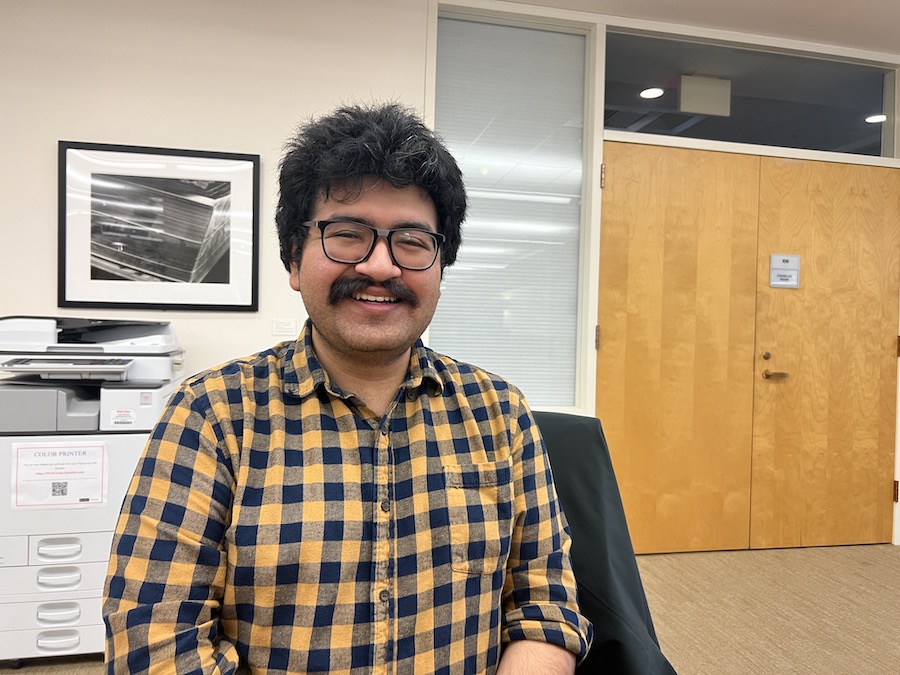The Many Possibilities of the Long Take
By Rebecca Goldfine
While Mendoza's omnivorous love of storytelling has always included movies (as well as books, theater, and art), he developed a devotion to watching them regularly during quarantine.
“I was struck by thinking, ‘how does this work, why am I so intrigued? I should be falling asleep, why am I not falling asleep?’”
Long takes “demand something of us as audience members that other screens in the world don’t demand of us,” Mendoza continued, quoting a book by Lutz Koepnick he’s reading called The Long Take: Art Cinema and the Wondrous. “The long take,” he added, doesn’t lean on editing to keep the audience engaged. “It will become more boring if the acting is not good or the screenplay isn't good, so those details have to be excellent.”
Rising junior Eduardo Mendoza’s campus job helped inspire his summer research project analyzing how film directors deploy the long take. He's a student curator for the Kinolab, a scholarly database of television and movie clips developed by Bowdoin faculty and staff. Mendoza’s role is to watch great movies closely, clipping segments and tagging them with terms like “diegetic music” or “great costumes” to make them searchable to researchers and students.
“All the time working for the Kinolab has been great for giving me cinematic ideas and exposing me to different kinds of cinematic styles and thinking,” he said.
The movie selection is broad, encompassing filmmakers from around the world and from different eras. It includes Theo Angelopoulos, Kelly Reichardt, Abbas Kiarostami, Richard Linklater, Max Ophuls, Sergio Leone, Andrei Tarkovsky, and Chantal Akerman.
Each filmmaker uses the long take in a unique way to achieve their objective. “It really is a thumbprint. Each director uses it differently, and often uses it differently in every film they make,” Mendoza said.
One outcome of engaging with a long take as a viewer is greater intimacy with the characters, Mendoza noted. “You spend so much time with them,” he continued, referring in this case to the talkative couple in Linklater’s Before trilogy, “that it almost feels like you are part of the conversation, too, but you’re also apart, watching something special.”
Speaking about Ackerman’s 1975 film, Jeanne Dielman, 23 Quai du Commerce, 1080 Bruxelles, a three-hour-plus movie about a housewife going about her daily chores, Mendoza said, “It pushes you to the edge! I didn’t think I could keep watching her peeling potatoes.”
But he stuck with it. “The amazing thing about it is you are sharing time with someone, you become accustomed to the character, her habits and routine, and when things start to go wrong, you notice.”
He paused. “And spending time with people—we probably need more of that.” he said.